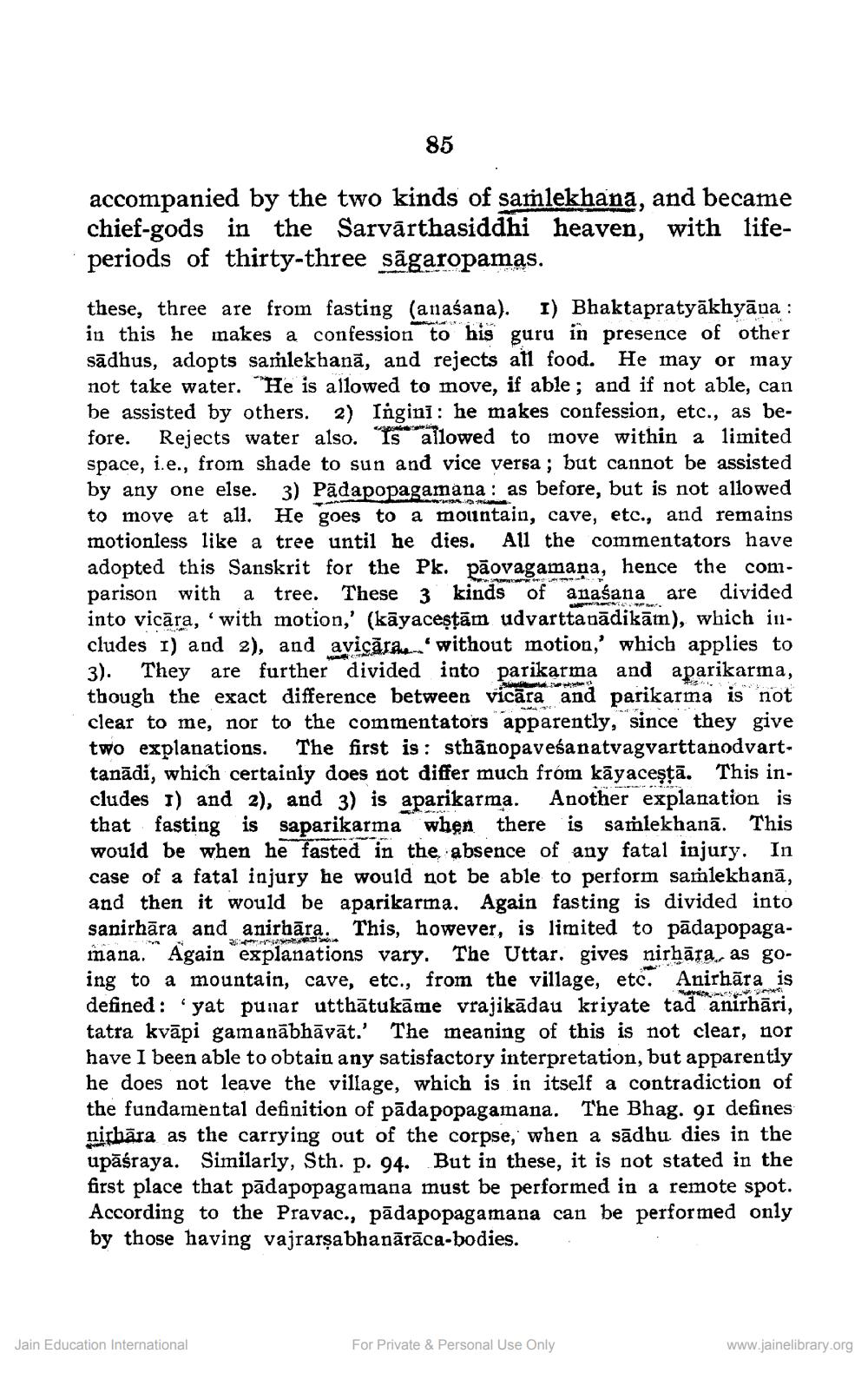________________
85
SALA
.
accompanied by the two kinds of samlekhana, and became chief-gods in the Sarvārthasiddhi heaven, with lifeperiods of thirty-three sāgaropamąs. these, three are from fasting (anaśana). I) Bhaktapratyākhyāua : in this he makes a confession to his guru in presence of other sādhus, adopts samlekhanā, and rejects all food. He may or may not take water. He is allowed to move, if able; and if not able, can be assisted by others. 2) Inginī: he makes confession, etc., as before. Rejects water also. Is allowed to move within a limited space, i.e., from shade to sun and vice versa; but cannot be assisted by any one else. 3) Pädapopagamana: as before, but is not allowed to move at all. He goes to a mountain, cave, etc., and remains motionless like a tree until he dies. All the commentators have adopted this Sanskrit for the Pk. pāovagamana, hence the comparison with a tree. These 3 kinds of anaśana are divided into vicāra, 'with motion,' (kāyaceştām udvarttanādikām), which includes I) and 2), and avicāra without motion, which applies to 3). They are further divided into parikarma and aparikarma, though the exact difference between vicāra and parikarma is not clear to me, nor to the commentators apparently, since they give two explanations. The first is : sthānopaveśanatvagvarttanodvarttanādi, which certainly does not differ much from kāyaceştā. This includes 1) and 2), and 3) is aparikarma. Another explanation is that fasting is saparikarma when there is samlekhanā. This would be when he fasted in the absence of any fatal injury. In case of a fatal injury he would not be able to perform samlekhanā, and then it would be aparikarma. Again fasting is divided into sanirhāra and anirhāra. This, however, is limited to pādapopagamana. Again explanations vary. The Uttar. gives nirhāra, as going to a mountain, cave, etc., from the village, etc. Anirhāra is
ned: yat punar utthātukāme vrajikādau kriyate tad anirhāri, tatra kvāpi gamanābhāvāt.' The meaning of this is not clear, nor have I been able to obtain any satisfactory interpretation, but apparently he does not leave the village, which is in itself a contradiction of the fundamental definition of pāda popagamana. The Bhag. 91 defines nifbāra as the carrying out of the corpse, when a sādhu dies in the upāśraya. Similarly, Sth. p. 94. But in these, it is not stated in the first place that pādapopagamana must be performed in a remote spot. According to the Pravac., pādapopagamana can be performed only by those having vajrarsa bhanārāca-bodies.
Jain Education International
For Private & Personal Use Only
www.jainelibrary.org




